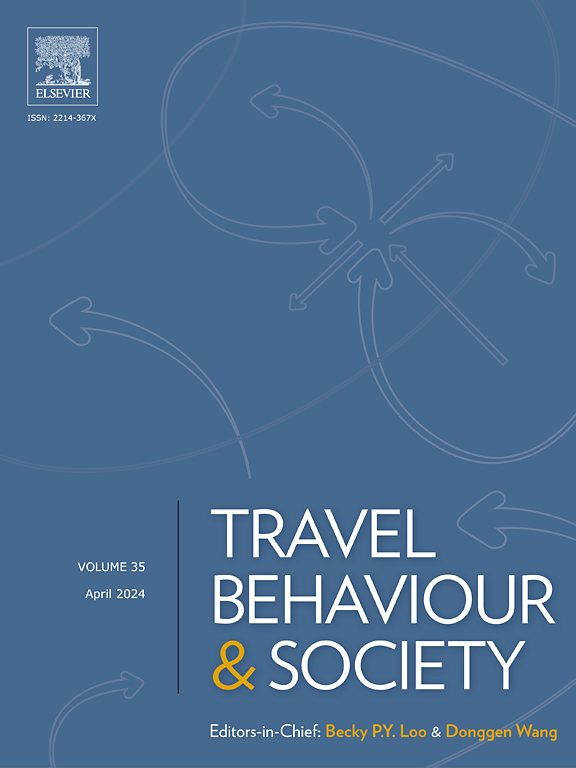Identifying low-to-middle-income residents’ secondary activity patterns using smart card data
IF 5.1
2区 工程技术
Q1 TRANSPORTATION
引用次数: 0
Abstract
The enrichment of urban lifestyles necessitates a comprehensive understanding of individuals’ secondary activity patterns. For low-to-middle-income residents, secondary activities assume a crucial role in understanding their living conditions. Accordingly, this study proposes a method to extract secondary activities from smart card data and to analyze its spatio-temporal patterns. Corroborated by travel survey data, a significant portion of smart card users have low to middle incomes, we contend that the derived patterns effectively represent the living circumstances of low-to-middle-income individuals travel by public transportation. These patterns are characterized from three aspects, e.g., quantity, spatial coverage, and preference based on home and workplace. A case study in Shenzhen, China identifies several meaningful patterns in the secondary activities of the low-to-middle-income groups who travel frequently by public transportation: groups whose activity patterns are occasional and with strong home-workplace constraints, groups with small activity coverages and strong home-workplace constraints, groups with wide activity coverages and weak home-workplace constraints, and groups with multiple activities and weak home-workplace constraints. The case study indicates that the majority of low-to-middle-income groups who frequently use public transportation either have very few secondary activities by public transportation, or are severely constrained by home and workplace. These discoveries have the potential to assist urban planners in enhancing the accessibility of urban amenities for low-to-middle-income residents, thereby enhancing both the quantitative and qualitative aspects of their secondary activities.
利用智能卡数据识别中低收入居民的次要活动模式
城市生活方式的丰富性要求对个人次要活动模式的全面理解。对于中低收入居民来说,次要活动在了解他们的生活条件方面起着至关重要的作用。据此,本研究提出了一种从智能卡数据中提取次要活动并分析其时空格局的方法。根据旅游调查数据,有相当一部分智能卡用户是中低收入人群,我们认为所得模式有效地反映了中低收入人群乘坐公共交通出行的生活状况。这些模式从数量、空间覆盖和基于家庭和工作场所的偏好三个方面表现出来。中国深圳的一项案例研究发现,经常乘坐公共交通出行的中低收入群体的次要活动有几种有意义的模式:活动模式为偶然性且具有较强的家庭-工作场所约束的群体,活动覆盖范围小且具有较强的家庭-工作场所约束的群体,活动覆盖范围广且具有较弱的家庭-工作场所约束的群体,以及多种活动且具有较弱的家庭-工作场所约束的群体。案例研究表明,大多数经常使用公共交通工具的中低收入群体要么很少乘坐公共交通工具进行次要活动,要么受到家庭和工作场所的严重限制。这些发现有可能帮助城市规划者提高中低收入居民获得城市便利设施的机会,从而提高其次要活动的数量和质量。
本文章由计算机程序翻译,如有差异,请以英文原文为准。
求助全文
约1分钟内获得全文
求助全文
来源期刊

Travel Behaviour and Society
TRANSPORTATION-
CiteScore
9.80
自引率
7.70%
发文量
109
期刊介绍:
Travel Behaviour and Society is an interdisciplinary journal publishing high-quality original papers which report leading edge research in theories, methodologies and applications concerning transportation issues and challenges which involve the social and spatial dimensions. In particular, it provides a discussion forum for major research in travel behaviour, transportation infrastructure, transportation and environmental issues, mobility and social sustainability, transportation geographic information systems (TGIS), transportation and quality of life, transportation data collection and analysis, etc.
 求助内容:
求助内容: 应助结果提醒方式:
应助结果提醒方式:


